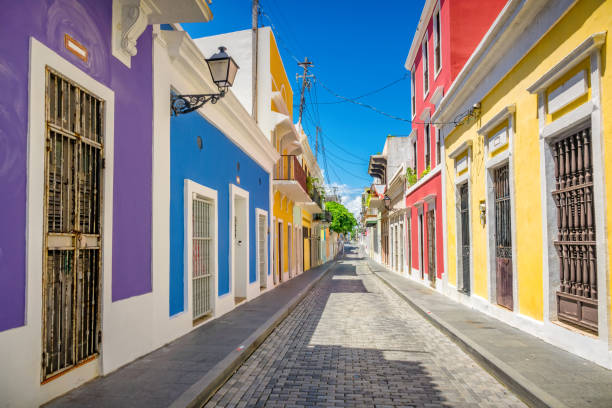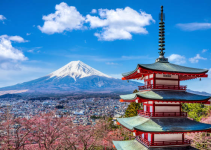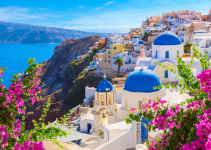Puerto Rico has this way of getting under your skin. The turquoise water, the rhythm of salsa spilling from open doorways, the smell of mofongo wafting through Old San Juan’s cobblestone streets. It’s magic, really.
But here’s the thing. Every destination has its quirks, its little traps that can turn your dream vacation into a frustrating experience. Puerto Rico is no exception.
I’ve spent enough time on this island to know what can derail your trip before it even gets started. So let me share what you should avoid to make your Puerto Rican adventure everything you’re hoping for.

Things to Avoid in Puerto Rico
Trust me, knowing these ahead of time will save you money, time, and a whole lot of headaches. Here’s what to watch out for.
1. Skipping Travel Insurance and Rental Car Coverage
Your credit card’s rental car insurance probably won’t cover you here. I know, I know. You’ve relied on it everywhere else. Puerto Rico is different, though, and this constantly catches people off guard.
Most U.S. credit card companies exclude Puerto Rico from their rental car coverage because it’s considered a “foreign territory” for insurance purposes. Even though it’s a U.S. territory. Yeah, it’s confusing. But if you get into an accident or your car gets damaged, you could be on the hook for thousands of dollars.
The rental companies know this. They’ll push their insurance hard, and honestly, you should take it. The roads can be aggressive, signage is sometimes unclear, and potholes appear out of nowhere. I’ve seen rental cars with cracked windshields from flying rocks on mountain roads. One friend paid $800 out of pocket for a scratched bumper she didn’t even cause.
Beyond car coverage, get comprehensive travel insurance. Hurricanes can pop up during hurricane season (June through November). Flights get canceled. Medical emergencies happen. Your domestic health insurance might not fully cover you here either, despite Puerto Rico being U.S. soil. Better safe than sorry.
2. Relying Solely on GPS and Google Maps
Your phone’s GPS will confidently send you down roads that haven’t existed in years. Or worse, roads that technically exist but probably shouldn’t.
Google Maps works in Puerto Rico, but it doesn’t always reflect reality on the ground. The island’s infrastructure changes; sometimes roads get rerouted, and rural mountain routes don’t always match what your screen shows. I’ve watched tourists follow GPS directions straight into a muddy dead-end in the mountains near Utuado. The app said, “Turn right.” There was no right turn, just someone’s driveway leading to a coffee plantation.
The best approach? Use GPS as a general guide, but pay attention to road signs (when they exist) and street markers. Ask locals for directions when you’re unsure. Puerto Ricans are incredibly helpful and will often give you better route advice than any app. Download offline maps before you head into rural areas. Cell service gets spotty in the mountains and along some coastal roads.
Also, know that many addresses here use a different system. Instead of street addresses, you’ll see something like “Road 413, km 4.2.” That’s telling you which road to take and the kilometer marker to watch for. Once you get used to it, it actually makes more sense than hunting for building numbers.
3. Limiting Yourself to San Juan
San Juan is gorgeous. Old San Juan deserves every bit of hype it gets. But if you spend your entire trip in the capital, you’re missing the real Puerto Rico.
The island is only 100 miles long and 35 miles wide. You can reach almost anywhere in a few hours of driving. Yet so many visitors plant themselves at a San Juan resort and never leave. They miss the bioluminescent bays in Vieques and Fajardo, where the water literally glows blue when you move through it. They miss the lush rainforest of El Yunque with its waterfalls and hiking trails. They miss the stunning beaches of Culebra, often ranked among the best in the Caribbean.
Drive down to Ponce, the island’s second city, where the architecture tells a different story than in San Juan. Head west to Rincón for world-class surfing and breathtaking sunsets. Explore the Rio Camuy Cave Park, one of the largest cave systems in the world. Visit the tiny mountain towns where life moves more slowly and the food tastes even better.
Getting out of San Juan shows you the diversity of the island. The landscapes change dramatically. The culture shifts. The experiences multiply. Rent that car (with insurance, as we discussed) and explore. You’ll thank yourself later.
4. Swimming at Beaches Without Lifeguards
Those pristine, empty beaches look tempting. No crowds, no noise, just you and paradise. But there’s usually a reason they’re empty.
Puerto Rico’s beaches range from calm and family-friendly to dangerously rough. The currents can be deceptively strong, especially on the north and west coasts. Rip currents claim lives every year, and they don’t discriminate between strong swimmers and weak ones. If you don’t know how to spot them, you won’t see them coming.
Beaches with lifeguards typically have them for a reason. These are the beaches where swimming is safer, where conditions are monitored, and where help is available if something goes wrong. Popular beaches like Luquillo Beach, Flamenco Beach in Culebra, and sections of Isla Verde have lifeguards during peak hours.
If you do venture to a more remote beach, at minimum check the surf conditions and ask locals about the water safety. Look for warning flags or signs. Watch the waves for a few minutes before going in. If you see strong waves or notice water flowing away from shore in a channel, think twice. Some of the most beautiful beaches, like certain spots along the west coast near Aguadilla, have powerful surf that’s best left to experienced surfers.
Nobody wants their vacation to end in tragedy. Stick to supervised beaches or at least do your homework before jumping into unfamiliar water.
5. Drinking Tap Water Without Consideration
This one’s nuanced. Tap water in Puerto Rico is generally treated and technically safe to drink, according to the Puerto Rico Aqueduct and Sewer Authority. Hotels and resorts usually have good water quality.
Here’s the catch. The infrastructure is aging and inconsistent. Water quality varies significantly depending on where you are. In metropolitan areas and tourist zones, you’re probably fine. In rural areas or after heavy rains, the story changes. Hurricane Maria in 2017 damaged water systems across the island, and not everything has been fully repaired or upgraded.
Many locals drink bottled water or use filtration systems at home. They know their area’s water better than any guidebook. If they’re not drinking it straight from the tap, you might want to follow suit.
Your stomach might also react differently to water you’re not used to, even if it’s technically safe. Different mineral content, different treatment processes. It’s not always about contamination but about what your digestive system is accustomed to.
The easy solution? Buy bottled water or bring a portable water filter. It’s cheap insurance against spending your vacation in the bathroom. Most restaurants serve bottled water anyway, and it’s readily available at every grocery store and gas station. Coffee and cooked foods are fine since the water is boiled.
6. Underestimating Drive Times and Road Conditions
You look at the map and think, “Oh, that’s only 30 miles away. We’ll be there in half an hour.” Then you’re still driving 90 minutes later, gripping the steering wheel, wondering what happened.
Puerto Rico’s roads are an adventure. The main highways are decent, but once you leave those, conditions deteriorate fast. Potholes the size of small craters appear without warning. Mountain roads twist and turn with hairpin curves that slow you to a crawl. What looks like a straight shot on the map might actually be a winding mountain route that takes three times longer than you expected.
Traffic around San Juan can be brutal during rush hours, turning a 15-minute drive into an hour-long ordeal. Construction projects close lanes without much notice. GPS might show you a shortcut through a neighborhood where streets are barely wide enough for one car, let alone two-way traffic.
People also drive differently here. Speeders are common, but so are drivers going 20 mph under the limit on curvy roads. Turn signals are suggestions. You’ll need patience and defensive driving skills.
Always add buffer time to your plans. If GPS says 45 minutes, assume an hour or more. Leave early for the airport. Build in flexibility for exploring. This isn’t a place where you can pack your schedule tight and expect everything to run on time. Accept that, and you’ll enjoy the journey more.
7. Forgetting Cash and Small Bills
Credit cards are widely accepted in tourist areas, but Puerto Rico still runs on cash more than you might expect. Especially outside the main tourist zones.
Small colmados (local grocery stores), food trucks, roadside eateries, and family-run businesses often operate on cash only. The best mofongo you’ll ever eat might come from a small restaurant in the mountains that doesn’t have a card reader. Beach vendors selling fresh coconuts or bacalaitos (codfish fritters) want cash. Parking meters in some areas only take coins.
ATMs are available, but they charge fees, and some have daily withdrawal limits that might be lower than you need. Finding one in a remote area can be challenging.
Bring cash before you arrive, or withdraw a good amount when you first land. Keep smaller bills on hand because making change can be an issue. Nobody wants to break a $50 bill for a $5 purchase, especially at a small stand. Having $1, $5, and $10 bills makes transactions smoother.
This is also important for tipping. Service workers depend on tips, and having cash means you can properly thank the person who helped you. Delivery drivers, tour guides, restaurant servers, the person who carries your bags to your room—they all appreciate cash tips.
8. Ignoring Hurricane Season Planning
Hurricane season runs from June 1 through November 30, with peak activity in August and September. If you’re traveling during these months, you need a plan.
Puerto Rico takes hurricanes seriously because it has to. The island has been devastated multiple times. Hurricane Maria in 2017 was catastrophic. Even smaller storms can cause significant disruptions—flooded roads, power outages, closed businesses, canceled flights.
This doesn’t mean you should avoid the island during hurricane season. The weather is often beautiful, and you can find better deals. But go in prepared. Monitor weather forecasts before and during your trip. Sign up for weather alerts. Know where the nearest shelter is if you’re in a rental property. Understand your hotel’s hurricane policy.
Book accommodations that have backup generators. Many hotels do, but smaller guesthouses might not. Pack essentials like flashlights, batteries, and any necessary medications with you rather than in checked luggage. Keep your phone charged and have a portable charger.
Most importantly, have travel insurance that covers trip interruption and cancellation due to weather. If a hurricane is bearing down on the island, airlines will issue travel waivers, but you’ll want insurance to cover non-refundable bookings.
Check your travel dates against historical hurricane patterns. Late October and November are generally calmer. Early June is usually safe too. The riskiest period is mid-August through mid-October.
9. Missing Out on Local Food Spots
Tourist area restaurants are convenient, but they’re rarely where locals eat. They’re fine if you want familiar food or a pretty view, but you’re paying premium prices for average quality.
The real Puerto Rican food scene happens in small spots that don’t have an online presence. Family-run chinchorreos (casual roadside restaurants), fondas (small local diners), and lechoneras (roast pork specialists) serve incredible food at a fraction of resort prices. These places specialize in dishes like pernil (roast pork), arroz con gandules (rice with pigeon peas), tostones (fried plantains), and alcapurrias (fried fritters).
You’ll find them along the side of roads, in residential neighborhoods, in small towns. They might look basic—plastic chairs, paper plates, maybe a tin roof. But the food is authentic, made from recipes passed down through generations.
Ask your Airbnb host where they eat. Ask taxi drivers for recommendations. Look for places packed with locals, especially during lunchtime. If you see a line of people waiting on a Sunday afternoon, join it. That’s where the good stuff is.
La Ruta del Lechón in Guavate is famous for this. It’s a stretch of road lined with lechoneras serving some of the best roast pork on the island. People drive from San Juan just to eat there. These are the experiences you’ll remember, the meals you’ll try to recreate at home and never quite get right.
Don’t be afraid to point at what others are eating if the menu is in Spanish. Smile, try your best, and enjoy. Food is a language everyone speaks.
10. Assuming Everyone Speaks English
Yes, Puerto Rico is a U.S. territory. Yes, many people speak English, especially in tourist areas. But Spanish is the primary language, and assuming everyone will speak English can lead to frustration and missed connections.
Outside San Juan and major tourist zones, English proficiency drops significantly. In small towns, rural areas, and local businesses, you’ll need at least basic Spanish to get by. Even in tourist areas, not every server, shop owner, or taxi driver will be comfortable speaking English.
This matters more than you think. Reading menus, asking for directions, checking into smaller hotels, dealing with emergencies—all easier if you speak some Spanish. More importantly, making an effort to speak the local language shows respect and opens doors. Puerto Ricans appreciate visitors who try, even if your Spanish is broken and awkward.
Learn basic phrases before you go. “Hola” (hello), “por favor” (please), “gracias” (thank you), “cuánto cuesta” (how much does it cost), “dónde está” (where is), and “no hablo español” (I don’t speak Spanish) will get you surprisingly far. Download a translation app that works offline. Better yet, take a few Spanish lessons before your trip.
Speaking Spanish, even badly, changes your experience. People warm up to you faster. You’ll have better conversations. You might get invited to local events or pointed toward hidden gems tourists never see. Language builds bridges, and in Puerto Rico, that bridge is worth crossing.
Wrapping Up
Puerto Rico rewards travelers who show up prepared and open-minded. Side-stepping these common pitfalls means more time enjoying what makes this island special and less time dealing with preventable problems.
Pack your sense of adventure along with your insurance documents. Bring curiosity and a willingness to explore beyond the resort walls. The real Puerto Rico is waiting for you, and it’s even better than the brochures suggest.


